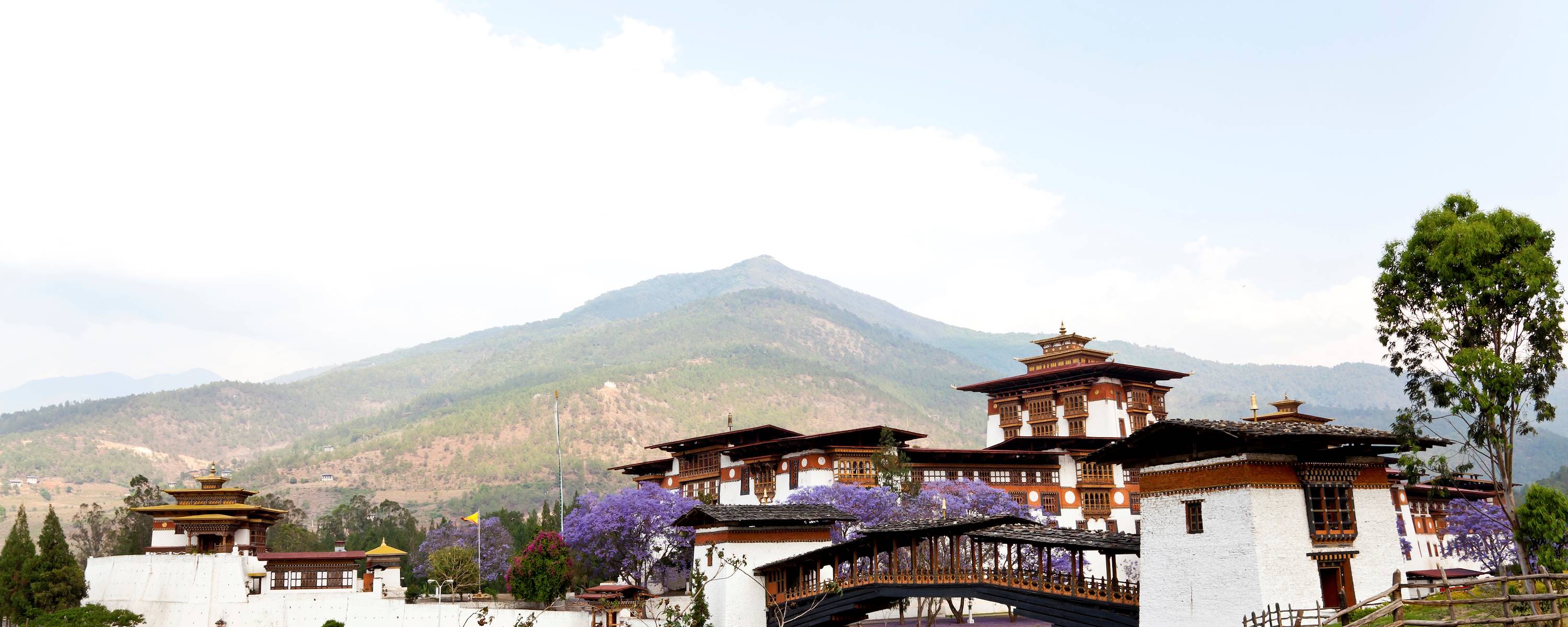

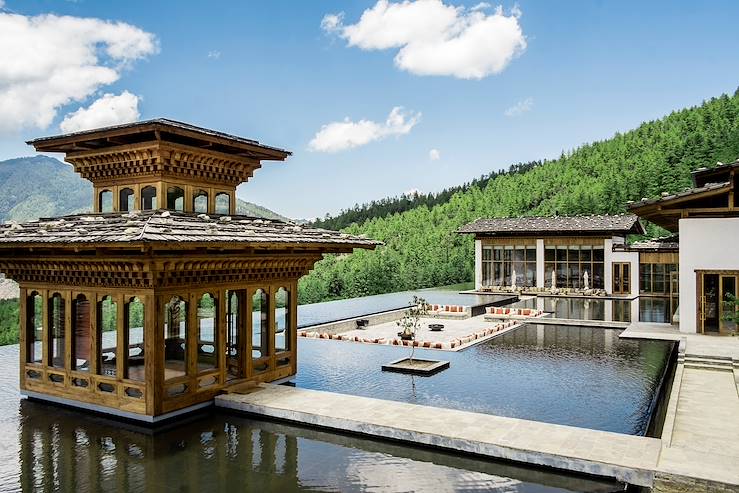
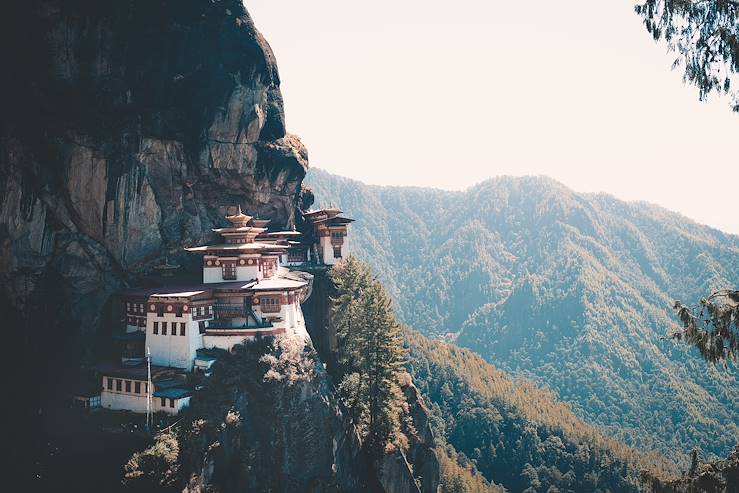
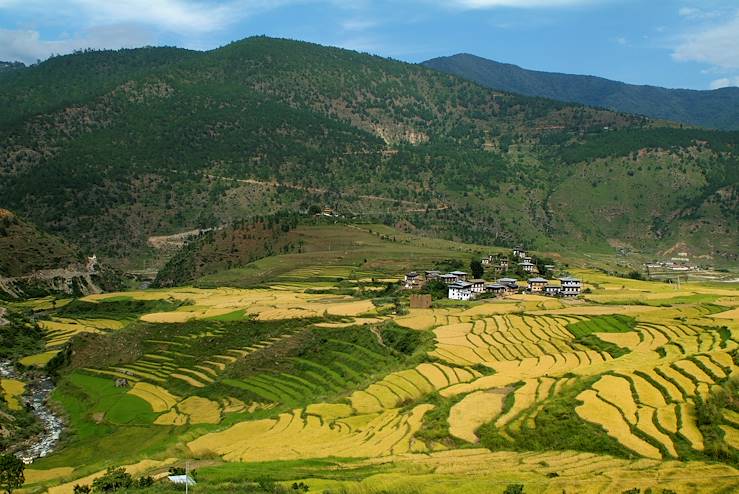

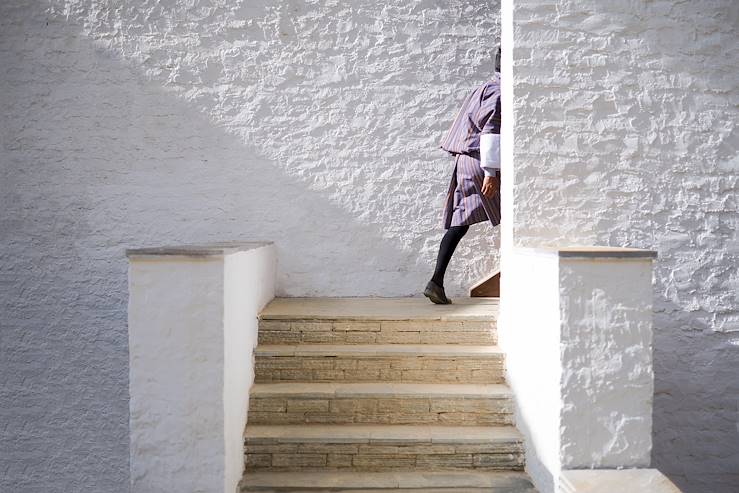
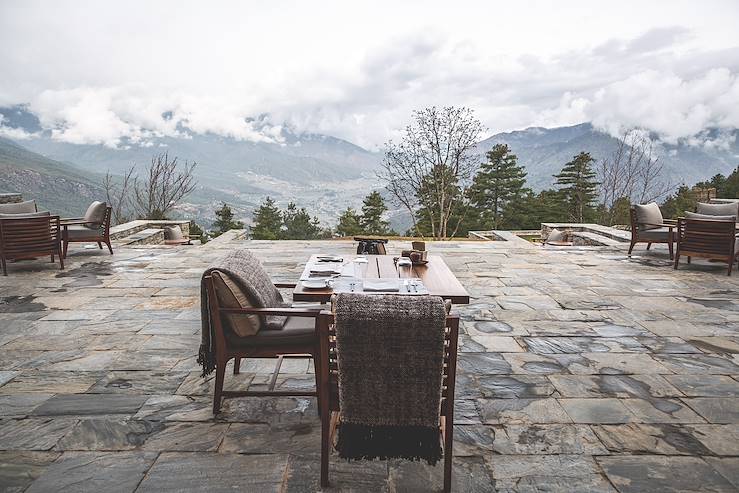
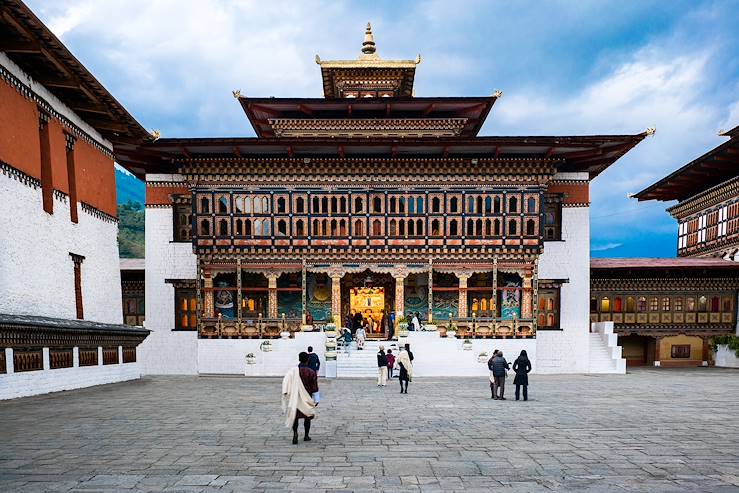
Inspiration for your own tailor-made trip
Bhutan
100% customisable for you
As well as Calcutta and Kathmandu, Delhi is one of the main gateways to Bhutan. Spend a night at Radisson Blue Plaza.
Fly to Paro and drive to Thimphu, situated in a valley at an altitude of over 7,800ft. Combining tradition and modernity, the country's political and economic capital is now expanding rapidly but it remains a quiet and pleasant town. Dynamic and culturally vibrant with markets and local crafts, it's a must-see in Bhutan. Finish off the day with some free time to spend as you please. Your hotel for the next two nights was built by a Japanese architect whowas inspired by Bhutanese design, and is located in the heart of Thimphu.
There are three main visits planned during the day. The National Memorial Chorten was built in the 1970s by the royal family: its paintings and statues are a reminder that Bhutan is the only Buddhist kingdom in the world. Then you'll discover Tashishlo Dzong, 'fortress of the glorious religion', which today serves as the seat of several ministries. Finally, you'll visit the National Library which is home to many treasures of Buddhist literature.
Depending on the weather, you can easily walk up the hills to the small Wangditse Gomba monastery where, amongst the flowers and prayer flags, the views of the valley and the vegetation are very beautiful.
The road to Punakha goes all the way up to the Dochula Pass, more than 9,800ft above sea level. You'll get a spectacular view of the Wangdi Phodrang mountain range. A former winter capital of the Kingdom of Bhutan until 1962, Punakha is one of the country's 20 dzongkhags (districts). It is full of vegetation, rhododendrons, laurels and magnolias, all of which enjoy the very mild micro climate. Here lies the embalmed body of Shabdrung Ngawang, founder of Bhutan, who disappeared in 1651. The region is full of artistic riches and you cannot think of Punakha without Punakha dzong coming to mind. Punakha dzong is nicknamed the 'Palace of Great Bliss' and is one of the oldest in the country. The first king of Bhutan was crowned in 1907 and the spiritual authority of Bhutan still has winter quarters there.
Included in the itinerary - A visit to the dzong, which has strategically dominated the meeting point of the Pho Chu and Mo Chu rivers since 1637. In the past it was damaged by fires and an earthquake, however, it has recently been beautifully restored.
Head to Paro, the gateway to and from your Bhutanese journey. Situated at an altitude of 7,300ft, Paro is surrounded by beautiful mountains. In the heart of the Paro Valley, the town is dotted with rich vegetation, a multitude of small, picturesque villages and ancient buildings. Up above, the Taktshang Monastery (nicknamed the Tiger's Nest) dominates the entire valley. It is one of Bhutan's sacred landmarks. For an immersion in Bhutanese culture, we also suggest a visit to the National Museum, a beautiful building dating back to 1656.
Included in the itinerary - A visit to the dzong, on a hill overlooking the city. Sometimes nicknamed the 'Monastery of Jewels', it was built in 1646 by King Shabdrung Ngawang Namgyal. The great annual religious festival (tsechu) takes place in the main courtyard. Also visit the ta dzong (the observation tower, closed on Saturdays and Sundays), which now houses the National Museum and its collections of art, relics, coins and thangkha (Buddhists paintings).
In the morning you'll depart for Taktshang, the legendary Tiger's Nest, which is located almost 3,000ft high up on the mountainside, overlooking the valley. The place takes the name 'Tiger Nest' from the Rimpoche guru, who is said to have arrived there on the back of a tiger to meditate; it is now an important place of pilgrimage. In April 1998, a fire severely damaged the main structure of the building and many of the precious objects inside, but it was completely rebuilt in the years after and it still a fascinating place to visit. It can be reached after a brisk two-hour walk during which it can be gradually seen, often surrounded by clouds. In the afternoon you'll visit Kichu Lhakhang, an ancient monastery in the valley, with beautifully preserved woodwork. After exploring this charming place, you'll have the rest of the day as free time to go for a stroll, go shopping or have a rest.
Back to Delhi, India. Old Delhi is the city's huge and traditional neighbourhood, where charm oozes from the bazaars and the narrow, lively and crowded streets. In your trip to this ancient area you'll have the opportunity to visit the large Jama Masjid mosque: built between 1644 and 1658, it is characterised by three huge domes of white and black marble. In addition to the vast prayer room, the mosque's gigantic esplanade can accommodate nearly 25,000 worshippers; the Chandni Chowk bazaar is a hive of activity full of colours and fragrances; and the Raj Ghat, the memorial to Mahatma Gandhi.
Included in the itinerary - A private tour of the neighbourhood with a private guide.
Overnight international flight arriving the next morning.
Everything in this itinerary is entirely customisable, down to the smallest details. Here are some more suggestions of what could be included

Each of our trips is entirely tailor-made with originality, quality and cultural immersion in mind. Our team of destination specialists will craft itineraries based on your tastes, using their first-hand knowledge and the help of our in-country team of Concierges and guides. All trips are accompanied by a wide range of additional services, including a 24-hour helpline, the Original Travel app, fast-track airport services and much more.
ENQUIRE NOW
Our team of destination experts will get to know you and your unique requirements for your holiday

We work with you to build an ultra-personalised holiday itinerary with your choice of accommodation, experiences and activities

All of our holidays include little extras designed to make a big difference to your trip, from fast-tracking you through airport check-in and security to our network of local Concierges